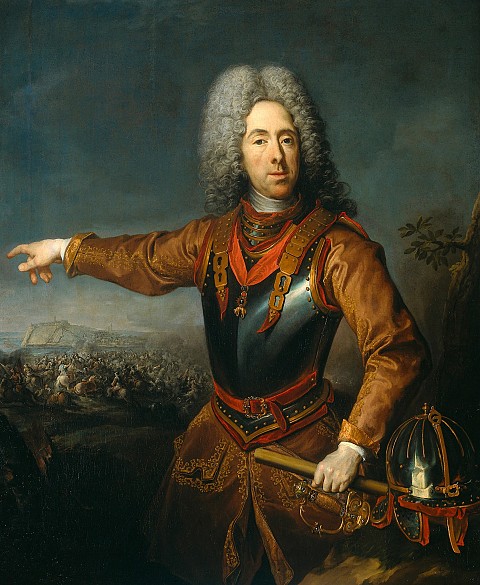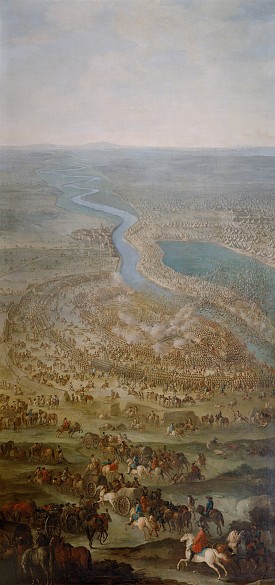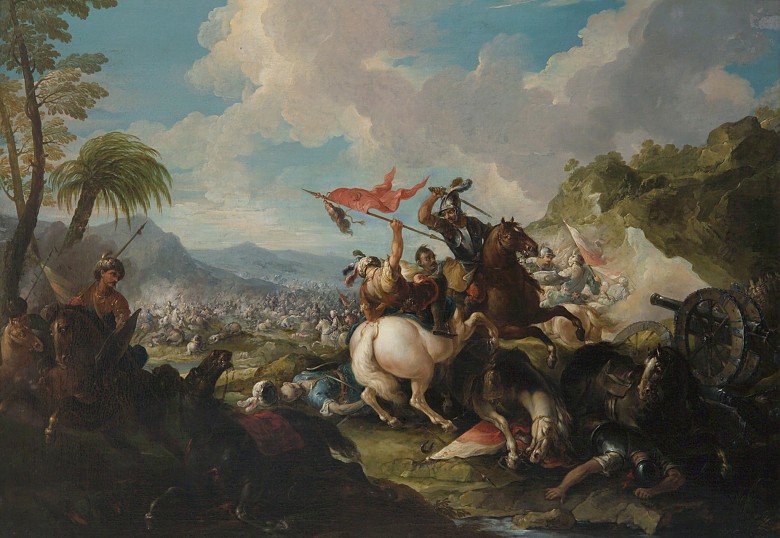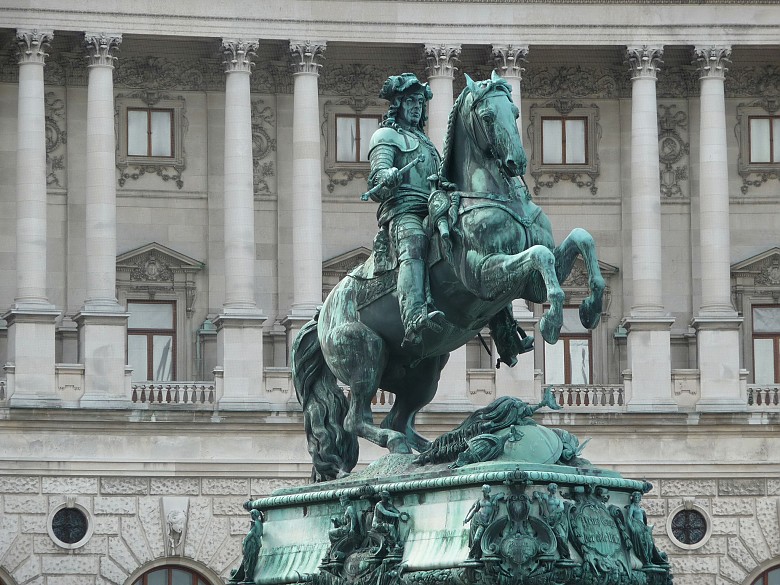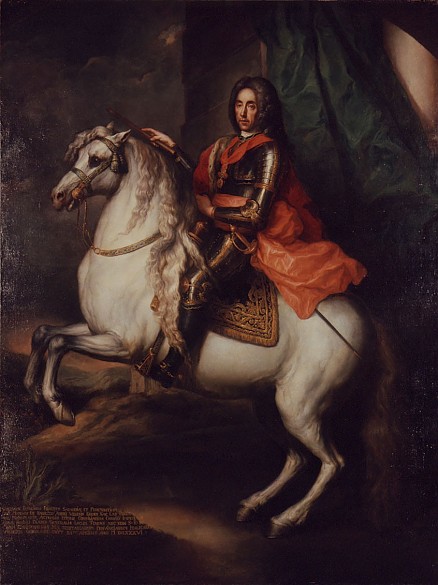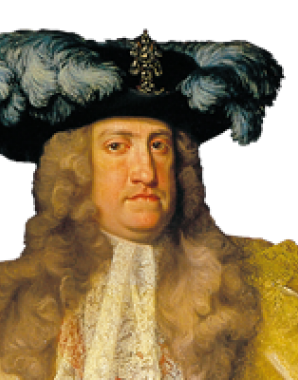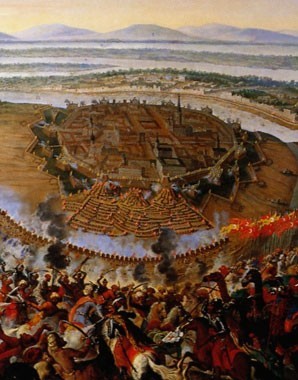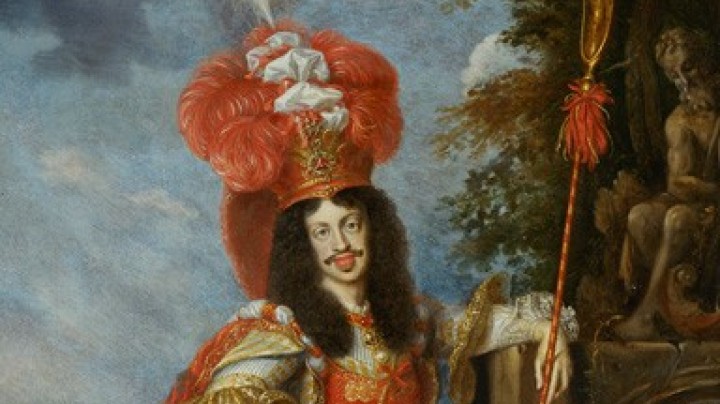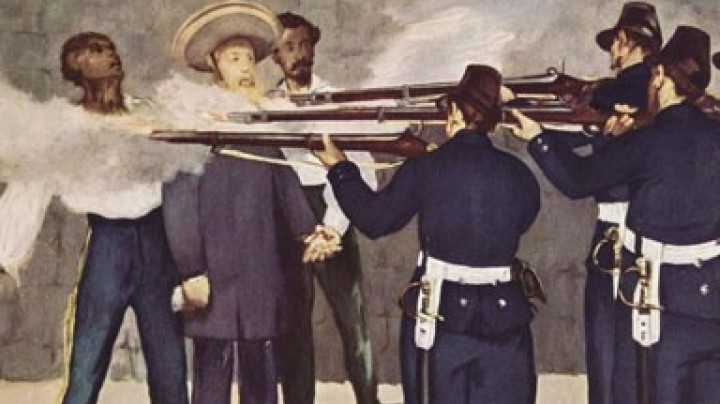Prince Eugene, the ‘noble knight’
The Second Turkish Siege of Vienna was followed by a Habsburg offensive that lasted until 1718. Later this period was to be regarded as a heroic era with Prince Eugene of Savoy as its foremost luminary.
First verses of the folksong ‘Prinz Eugen, der edle Ritter’, which celebrates the taking of Belgrade in 1717Prinz Eugen der edle Ritter,
wollt dem Kaiser wied'rum kriegen
Stadt und Festung Belgerad!
Er ließ schlagen eine Brukken,
daß man kunt hinüberrucken
mit der Armee vor die Stadt.Als die Brucken nun war geschlagen,
daß man kunnt mit Stuck und Wagen
Frei passir'n den Donaufluß,
Bei Semlin schlug man das Lager,
Alle Türken zu verjagen,
Ihn'n zum Spott und zum Verdruß.[‘Prince Eugene, the noble knight, wished to recover the city and fortress of Belgrade for the Emperor. He had a bridge built so that they could cross with the army by the city. / When the bridge had been built and cannon and wagons could be transported across the Danube, they set up camp at Semlin, in order to drive all the Turks away, to their shame and vexation.’]
After the final downfall of the Habsburg Monarchy, the period around 1700 was nostalgically regarded as the greatest and most heroic era of Austria’s past, with an important position being accorded to Prince Eugene of Savoy. To the Austrian mind, it was not so much his successes in western Europe that earned him this position of pre-eminence but his victories over the Turks in Hungary and the Balkans. In spite of his bloody deeds, the ‘noble knight’ Prince Eugene acquired the image of a clean-handed hero. He waged wars that the emperors regarded as serving a good and just cause. As victor over the Turks, he was styled the ‘saviour of the West’.
The decisive factor behind the success of the offensive undertaken by Emperor Leopold I following the siege of Vienna was a crisis in the Ottoman state. The first prestigious successes came with the taking of Budapest and the Habsburg victory at the Battle of Harsány, near Mohács – and bloody businesses they were too: the conquest of Budapest turned into a massacre that saw thousands of Moslems and the town’s Jewish community brutally slaughtered. In 1697 Prince Eugene was given supreme command in Hungary and the war entered its decisive phase. Following the Battle of Zenta (now Senta, northern Serbia), in which once again tens of thousands of Turks lost their lives, the Turkish war was brought to an end in 1699 with the Peace of Karlowitz. What the Habsburgs had aspired to since the sixteenth century had now become reality: the dynasty now controlled all of Hungary and Transylvania (Siebenbürgen).
The War of the Spanish Succession afforded the Ottomans time to recover their strength, with the result that in 1716 a further Turkish war began under Emperor Charles VI. Once again, Prince Eugene scored prestigious victories: most notably, in August 1717 he took Belgrade with 70,000 soldiers opposing an Ottoman army of 150,000. This key fortress city at the confluence of the Sava and Danube now became a Habsburg possession for a number of years. It was in the peace concluded in the following year that the Habsburg dominions in south-east Europe were increased to their greatest extent. However, Habsburg prestige in the Balkans was to be reduced considerably when these newly won territories were lost in Charles VI’s second Turkish war in the 1730s. In the meantime, however, the wars with the Ottoman Empire had undergone one essential change: they were no longer ideological in character – with the Christian Habsburgs fighting against the ‘unbelievers’ – but simply conflicts between states.
